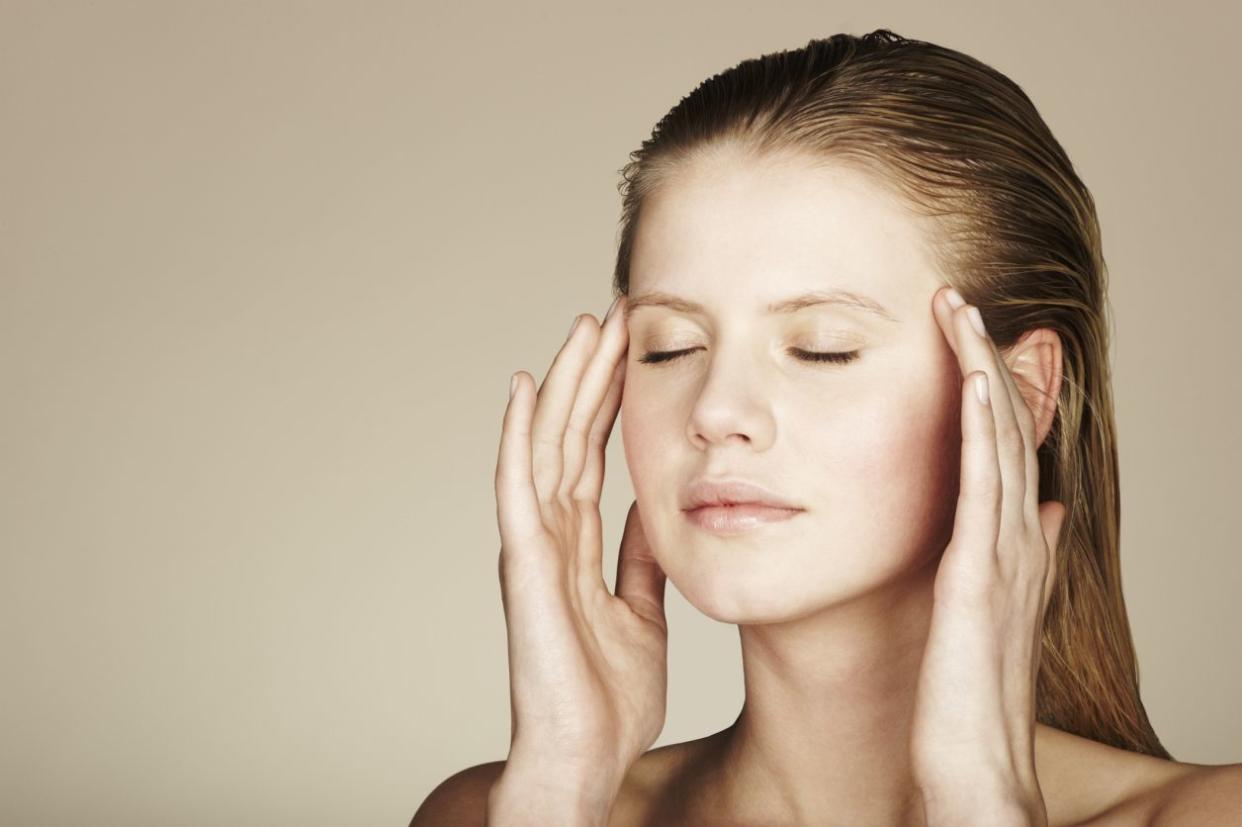Massaging Temples and Other Maneuvers to Treat Headaches

Brand New Images / Getty Images
Medically reviewed by Huma Sheikh, MD
Self-soothing headache relief maneuvers, such as temple massages or applying a cold washcloth to the head, may help temporarily ease headache symptoms.
This article discusses different types of self-pain-relieving maneuvers used to ease headache-related pain and other non-medication options.

Self Pain-Relieving Maneuvers
Self-pain-relieving maneuvers are self-soothing behaviors a person does to ease the pain in their body, like that of a headache. These are commonly used by people suffering from a tension headache or migraine.
While not an exhaustive list, here are examples of self-soothing headache maneuvers:
Massaging the temples, neck, or scalp with hand, fingers, or an object
Applying cold to the affected area, like with a cold pack, cold drink, or cold hand
Applying heat to the affected area, usually with a scarf, hairdryer, or hot shower
Compression (e.g., using a handkerchief wrapped tightly around the head) or pressing firmly on the area of pain
It's interesting to note that compression is more commonly utilized in migraineurs versus scalp massage in people with tension headaches. This is likely due to the sensation caused by a migraine (throbbing, like a drum beating on your brain) versus a tension headache (a tight grip or band around your head).
For those with cluster headaches, people are more likely to utilize unique maneuvers, like covering one ear, lateral rotation of the head, shallow breathing, moving about, or closing the nostril on the same side as the head pain.
Other Non-Medication Options
Besides the above-mentioned self pain-easing maneuvers, there are other ways to complement your headache and migraine care.
Some of these complementary therapies include:
Biofeedback
Progressive muscle relaxation
Cognitive-Behavioral Therapy
Aerobic exercise, especially for migraines
Trigger point release massage for tension-type headaches
Meditation
Deep breathing exercises
The good news is that compared to self-soothing headache maneuvers, the potential benefit of these complementary therapies is supported by various scientific studies.
That said, be sure to talk with your healthcare provider before embarking on one—this way you can choose the strategy that works best for your headache type and your unique needs/goals.
A Word from Verywell
While self-pain-relieving behaviors are temporarily effective at best, it's okay if you use them, as they are harmless. Perhaps doing something good for yourself adds a psychological benefit, which is hard to calculate from a study. Go with your gut on this one. And do not be afraid to try multiple strategies—it's usually a trial and error process to finding the right treatment regimen that works for you.
